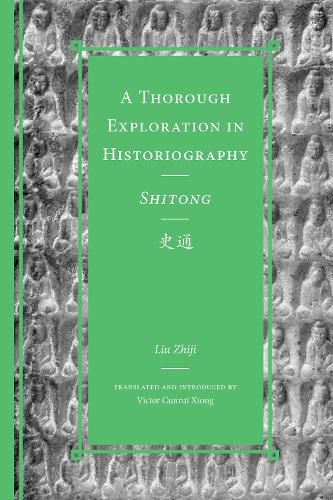Readings Newsletter
Become a Readings Member to make your shopping experience even easier.
Sign in or sign up for free!
You’re not far away from qualifying for FREE standard shipping within Australia
You’ve qualified for FREE standard shipping within Australia
The cart is loading…






In the early eighth century, frustrated with the authorities but still hoping to gain immortality through his future oeuvre, the Tang court historian Liu Zhiji set out to write Shitong, in which he would rigorously explore the tradition of historical writing in China. Liu scrutinized hundreds of texts from antiquity to the early Tang dynasty (618-907) and evaluated their authors according to what he deemed the three essential qualities for historians: talent, knowledge, and insight. Shitong is now generally considered the greatest work of traditional Chinese historiography. It preserves precious information on a host of lost ancient and medieval titles while advancing a critical view on history writing. This first translation of the work into a Western language provides textual criticism and annotation for the historical figures, events, and allusions that are crucial to appreciating the work, making it a must-read for students of historiography East and West.
$9.00 standard shipping within Australia
FREE standard shipping within Australia for orders over $100.00
Express & International shipping calculated at checkout
In the early eighth century, frustrated with the authorities but still hoping to gain immortality through his future oeuvre, the Tang court historian Liu Zhiji set out to write Shitong, in which he would rigorously explore the tradition of historical writing in China. Liu scrutinized hundreds of texts from antiquity to the early Tang dynasty (618-907) and evaluated their authors according to what he deemed the three essential qualities for historians: talent, knowledge, and insight. Shitong is now generally considered the greatest work of traditional Chinese historiography. It preserves precious information on a host of lost ancient and medieval titles while advancing a critical view on history writing. This first translation of the work into a Western language provides textual criticism and annotation for the historical figures, events, and allusions that are crucial to appreciating the work, making it a must-read for students of historiography East and West.